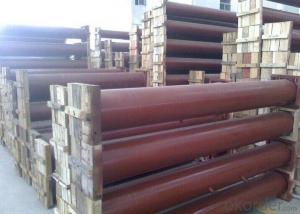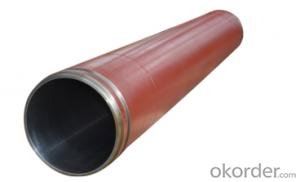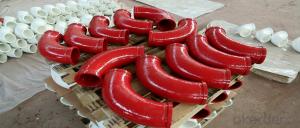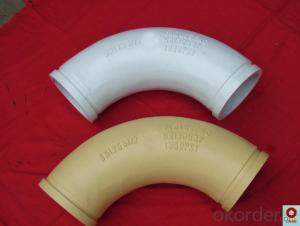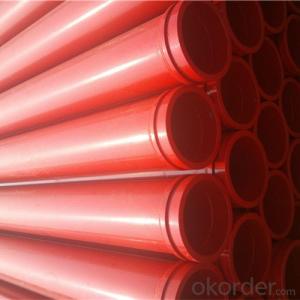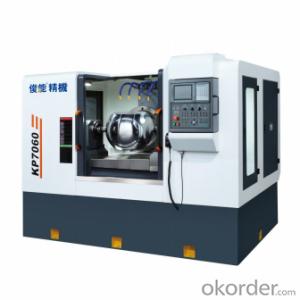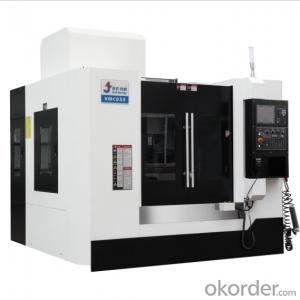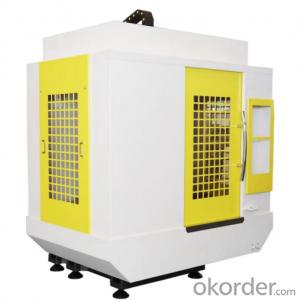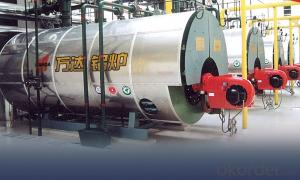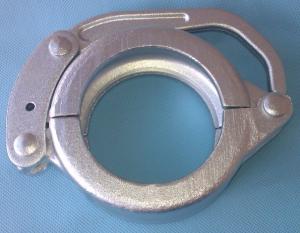PUMPING CYLINDER(PM) I.D.:DN200 CR. THICKNESS :0.25MM-0.3MM LENGTH:2305MM
- Loading Port:
- Shanghai
- Payment Terms:
- TT OR LC
- Min Order Qty:
- 2 pc
- Supply Capability:
- 1000 pc/month
OKorder Service Pledge
OKorder Financial Service
You Might Also Like
Product Description:
The Concrete Pump Delivery Cylinder normally made by steel material No. C45. according to customer’s requests, and also package in bundles or nude packing directly put into container.
Scope of Application of the Cylinders
The Pump Delivery Cylinder is a concrete pumping for combined use with other concrete pumps in concrete pumping operations. It can be widely used in the construction of various types of concrete structures like industrial and civil buildings, bridges, roads, and other types of infrastructure.
This Cylinder can only be used in concrete pump construction operations, but not in any other operations, like dragging, moving, or hoisting heavy articles or personnel. The pipe is also not allowed to be used in any location where any combustible or explosive material exists or a cave-in may occur.
Specifications:
Concrete Pump Delivery Cylinder DN200*2305
1. Capacity: 60,000~80,000cbm
2. Size: DN180, DN200, DN230..
4. Brand: PM, Sany,ZM SCHWING, PM, SANY, KYOKUTO, CIFA
5. Material: C45
6. Quenching and tempering to improve the hardness to HB241-280
7. Inner wall chrome thickness is 0.25-0.30mm, hardness HV820-900.
Product Advantages:
OKorder's Cylinders Channels are durable, strong, and safety.
Main Product Features:
· Premium quality
· Prompt delivery & seaworthy packing (10-20 days)
Reliable performance
Easy to weld
High safety.
· Professional Service
· Competitive pricing
Measuring of wall thickness from the outside
Low purchase cost
FAQ:
Q1: How long about delivery time?
A1: Normally we keep the raw materials for old customers and sometime we also keep stock products to make sure delivery time in any emergency cases.
Q2: How do we guarantee the quality of our Cylinders?
A2: We have established an advanced quality management system which conducts strict quality tests at every step, from raw materials to the final product. At the same time, we provide extensive follow-up service assurances as required.
Q3: How soon can we receive the product after purchase?
A3: Within three days of placing an order, we will book the vessel for goods. The specific shipping date is dependent upon international and government factors, but is typically10 to 30 workdays.
Q4: If we can produce some Cylinders according to customers request?
A4: Yes, we can produce Cylinders according to the difference country situations to make it suitable to the market and customers. We have very professional technical team to make the design.
Q5: How to make a quick resolution for after service?
A5: OKorder and our manufacture both have overseas branches all-around of world, If needed,
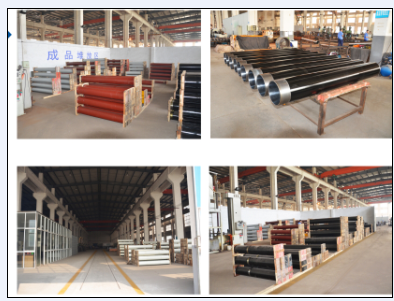
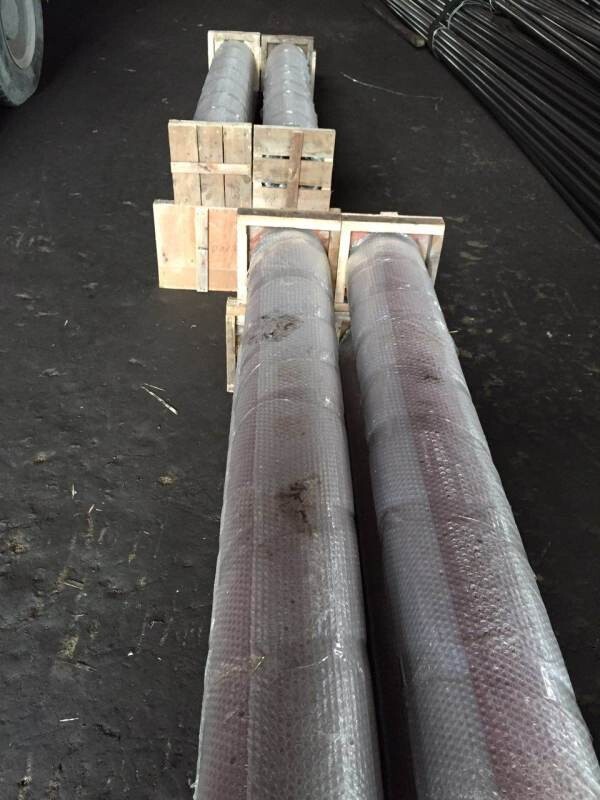
- Q:What are the indications of a worn-out concrete pump clamp?
- Some indications of a worn-out concrete pump clamp may include visible cracks or damage on the clamp, difficulty in tightening or loosening the clamp, leaking of concrete or water from the connection area, and decreased performance or efficiency of the pump due to inadequate sealing.
- Q:Which is the best home made concrete pump car?
- The first line is 31 and Zhonglian, the price is expensive, the car is big, the problem is not, and there are many small problems
- Q:What is the role of a concrete pump hopper vibrator?
- The smooth and efficient flow of concrete through the pump system is ensured by the concrete pump hopper vibrator. Typically, the vibrator is attached to the hopper, which is the container holding the concrete mixture. To break up any air pockets or clumps in the concrete, the vibrator creates high-frequency vibrations. This allows the concrete to flow freely through the pump and out of the nozzle. Proper vibration is essential, as unclogged or unblocked concrete prevents delays and inefficiencies in construction. Not only does the hopper vibrator facilitate concrete flow, but it also enhances the overall concrete quality. By eliminating air pockets and ensuring a smooth, consistent flow, the vibrator reduces the risk of voids or weak spots in the finished structure. In conclusion, the concrete pump hopper vibrator plays a crucial role in ensuring successful and efficient concrete pumping, while also improving the quality of the final product.
- Q:What are the different types of concrete pump hopper agitator shaft seals?
- There are various types of concrete pump hopper agitator shaft seals, including packing seals, mechanical seals, and lip seals.
- Q:What are the common issues that require replacement of concrete pump spare parts?
- There are several common issues that can arise in concrete pumps, leading to the need for replacement of spare parts. One common issue is wear and tear on the pump components. Over time, the constant movement of concrete through the pump can cause parts such as the piston, wear plate, and seals to deteriorate and require replacement. Another issue that can arise is blockages or clogs in the pump line. This can occur due to the buildup of hardened concrete or other debris, which can obstruct the flow of concrete. In such cases, it may be necessary to replace parts such as the delivery pipe or hose, or even the entire pump line, to ensure proper functioning. Leaks are another common problem that can occur in concrete pumps. These leaks can be caused by damaged or worn out seals, gaskets, or O-rings. If left unaddressed, leaks can lead to reduced pump performance and even potential safety hazards. Replacing the affected parts can help prevent further damage and ensure the pump operates efficiently. Additionally, pump malfunctions can occur due to electrical or mechanical issues. Faulty electrical components, such as switches or sensors, may need to be replaced to restore proper functionality. Mechanical problems, such as a worn-out gearbox or a malfunctioning hydraulic system, may also require replacement of specific pump parts. Overall, the common issues that require replacement of concrete pump spare parts include wear and tear, blockages, leaks, electrical malfunctions, and mechanical failures. Regular maintenance and inspection of the pump can help identify these issues early on, allowing for timely replacement of the necessary spare parts to keep the pump running smoothly.
- Q:How often should concrete pump agitator motors be inspected and replaced?
- Concrete pump agitator motors should be inspected regularly, ideally every six months, to ensure they are in proper working condition. However, the frequency of replacement depends on various factors such as usage, maintenance, and the overall condition of the motor. If any signs of wear, malfunction, or decreased performance are observed, immediate replacement is recommended to prevent further damage and ensure the smooth operation of the concrete pump.
- Q:How can a faulty agitator motor affect the concrete mixing process?
- A faulty agitator motor can significantly affect the concrete mixing process in several ways. Firstly, the agitator motor is responsible for the rotation of the mixing drum, which ensures that all the ingredients in the concrete mix are thoroughly blended. If the motor is faulty or not functioning properly, it may result in inadequate mixing. This can lead to inconsistencies in the concrete mixture, with some portions being over-mixed and others being under-mixed. As a result, the concrete may not achieve the desired strength, durability, or uniformity. Secondly, a faulty motor can cause irregular or insufficient agitation, leading to the formation of lumps or clumps in the concrete mix. These lumps can negatively impact the quality of the final product, as they may create weak spots or air pockets within the concrete. Moreover, the presence of lumps can compromise the overall workability of the mix, making it more challenging to handle and place, which can affect the efficiency and productivity of the construction project. Furthermore, a faulty agitator motor may result in uneven distribution of the materials within the mixing drum. This can cause variations in the proportions of aggregates, cement, water, and additives, which are crucial for achieving the desired concrete properties. Inconsistent material distribution can lead to concrete with inadequate compressive strength, reduced durability, and increased susceptibility to cracking or other forms of distress. Lastly, a malfunctioning agitator motor can result in increased mixing time, as it may take longer to achieve the desired level of homogeneity in the concrete mix. This can affect the overall productivity of the concrete mixing process, as it may lead to delays in construction schedules and increased costs. In summary, a faulty agitator motor can have a significant impact on the concrete mixing process. It can result in inadequate mixing, the formation of lumps, inconsistent material distribution, and increased mixing time. All these factors can contribute to a decrease in the quality of the final concrete product, compromising its strength, durability, workability, and overall performance.
- Q:How often should hopper agitator shaft seals be replaced in a concrete pump?
- The frequency at which hopper agitator shaft seals should be replaced in a concrete pump depends on several factors such as the type of pump, the amount of usage, the operating conditions, and the maintenance practices followed. Generally, hopper agitator shaft seals should be inspected regularly for signs of wear, damage, or leakage. If any issues are detected, they should be addressed promptly to prevent further damage. However, as a rough guideline, these seals may need to be replaced every 6 to 12 months or after approximately 500 to 1,000 operating hours. It is important to note that this is just an estimate, and the actual replacement frequency may vary. Factors such as the quality of the seals, the intensity of usage, and the conditions in which the pump operates can significantly influence the lifespan of the seals. Additionally, regular maintenance and proper lubrication can help extend the longevity of the seals. To ensure optimal performance and prevent potential issues, it is advisable to consult the manufacturer's recommendations and guidelines specific to the concrete pump model being used. Following their guidelines and regularly inspecting the seals will help determine the appropriate replacement interval for the hopper agitator shaft seals and ensure the pump operates efficiently.
- Q:Can concrete pump spare parts be customized according to specific requirements?
- Yes, concrete pump spare parts can be customized according to specific requirements. Customization allows for the adaptation of parts to meet specific needs such as size, shape, material, or functionality. This enables better compatibility and enhances the efficiency and performance of concrete pumps.
- Q:How often should concrete pump booms be inspected and maintained?
- Concrete pump booms should be inspected and maintained regularly, ideally on a monthly basis or as recommended by the manufacturer. This regular inspection and maintenance schedule helps ensure the safe and efficient operation of the equipment and minimize potential risks or breakdowns.
1. Manufacturer Overview |
|
|---|---|
| Location | |
| Year Established | |
| Annual Output Value | |
| Main Markets | |
| Company Certifications | |
2. Manufacturer Certificates |
|
|---|---|
| a) Certification Name | |
| Range | |
| Reference | |
| Validity Period | |
3. Manufacturer Capability |
|
|---|---|
| a)Trade Capacity | |
| Nearest Port | |
| Export Percentage | |
| No.of Employees in Trade Department | |
| Language Spoken: | |
| b)Factory Information | |
| Factory Size: | |
| No. of Production Lines | |
| Contract Manufacturing | |
| Product Price Range | |
Send your message to us
PUMPING CYLINDER(PM) I.D.:DN200 CR. THICKNESS :0.25MM-0.3MM LENGTH:2305MM
- Loading Port:
- Shanghai
- Payment Terms:
- TT OR LC
- Min Order Qty:
- 2 pc
- Supply Capability:
- 1000 pc/month
OKorder Service Pledge
OKorder Financial Service
Similar products
New products
Hot products
Hot Searches
Related keywords
